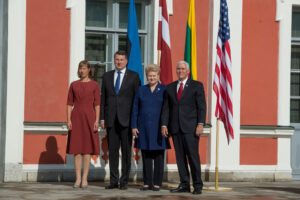Origin of Valentine’s Day – Valentine’s Day, celebrated on February 14th each year, is a day dedicated to expressing love and affection towards romantic partners and loved ones. Its origins date back centuries, blending ancient Roman rituals with Christian traditions and evolving into the modern celebration known today.
Origin of Valentine’s Day / Origin of Valentine’s Day

Ancient Roman Origins
Lupercalia Festival
Valentine’s Day traces its roots to the ancient Roman festival of Lupercalia, celebrated from February 13th to 15th. During this festival, Roman priests called Luperci would gather at the cave where, according to legend, Romulus and Remus were nursed by a she-wolf. They would sacrifice goats and dogs, and then whip women with the hides of the animals, believing it would enhance fertility and ensure easy childbirth.
Feast of Saint Valentine
The association of Valentine’s Day with romantic love began with the Christianization of the Lupercalia festival. In the 5th century, Pope Gelasius I replaced Lupercalia with the Feast of Saint Valentine on February 14th, honoring the martyrdom of Saint Valentine, a Roman priest who defied Emperor Claudius II’s ban on marriages for young men, secretly marrying couples. Legend suggests that he sent the first ‘valentine’ greeting to his jailer’s daughter signed ‘from your Valentine,’ thus popularizing the expression.
Medieval Influence
Chaucer and Romantic Tradition
Valentine’s Day gained popularity as a day of love during the Middle Ages. Geoffrey Chaucer, in his poem “Parliament of Fowls,” associated February 14th with the mating of birds, symbolizing love and courtship among humans. This contributed to the romantic tradition of exchanging love notes and tokens on Valentine’s Day.
Evolution into Modern Valentine’s Day
Commercialization
The commercialization of Valentine’s Day began in the 19th century with the mass production of Valentine’s cards and the exchange of gifts such as flowers, chocolates, and jewelry. Today, it has become one of the largest consumer spending holidays worldwide, with billions spent on gifts and celebrations annually.
Global Celebration
Valentine’s Day is now celebrated globally, transcending cultural boundaries. While traditions may vary, the essence of expressing love and affection remains universal. From romantic dinners to extravagant gestures, people around the world use this day to celebrate love in all its forms.
Symbolism and Traditions
Love Symbols
Symbols associated with Valentine’s Day include red roses, heart-shaped chocolates, and Cupid, the Roman god of love. These symbols evoke feelings of romance and passion, serving as tokens of affection exchanged between lovers.
Gifting Traditions
Common gifts exchanged on Valentine’s Day include flowers, especially red roses symbolizing love and desire, chocolates signifying sweetness, and personalized cards expressing heartfelt sentiments. Jewelry, romantic dinners, and weekend getaways are also popular choices for couples celebrating their love.
Contemporary Celebrations
Romantic Gestures
Modern celebrations of Valentine’s Day often involve romantic gestures such as candlelit dinners, surprise gifts, and love letters. Couples may also choose to reaffirm their commitment through acts of kindness and devotion, strengthening their bond.
Cultural Variations
While Valentine’s Day is widely celebrated, cultural variations exist in how it is observed. In some countries, such as Japan and South Korea, Valentine’s Day is celebrated differently, with women traditionally giving gifts to men on February 14th, followed by White Day on March 14th, when men reciprocate.
Criticism and Controversies
Commercialization Critique
Critics argue that the commercialization of Valentine’s Day has detracted from its true meaning, turning love into a commodity and pressuring individuals to spend extravagantly to prove their affection. Others highlight the environmental impact of mass-produced gifts and the perpetuation of consumerism.
Cultural Appropriation
Valentine’s Day has faced criticism for its Eurocentric origins and imposition of Western ideals of romance on non-Western cultures. Some argue that the celebration disregards diverse expressions of love and perpetuates cultural hegemony.
Conclusion
Valentine’s Day has evolved from ancient Roman rituals to a global celebration of love and affection. While its origins are rooted in history and tradition, its modern-day observance reflects a blend of cultural influences and commercial interests. Despite criticism and controversies, Valentine’s Day remains a cherished occasion for expressing love and appreciation.
Unique FAQs
- Is Valentine’s Day only for romantic partners?
- Valentine’s Day celebrates all forms of love, including familial and platonic relationships. It’s an opportunity to express appreciation for anyone you care about.
- Why are red roses associated with Valentine’s Day?
- Red roses symbolize love and passion, making them a popular choice for expressing romantic feelings on Valentine’s Day.
- What if I’m single on Valentine’s Day?
- Valentine’s Day can be celebrated solo or with friends and family. Consider treating yourself to something special or organizing a fun gathering with loved ones.
- How can I make Valentine’s Day special on a budget?
- There are many ways to celebrate Valentine’s Day without breaking the bank, such as cooking a homemade meal, creating DIY gifts, or planning a romantic picnic.
- Are there alternative ways to celebrate Valentine’s Day?
- Yes, you can celebrate Valentine’s Day in non-traditional ways, such as volunteering together, enjoying outdoor activities, or exploring a new hobby as a couple.




